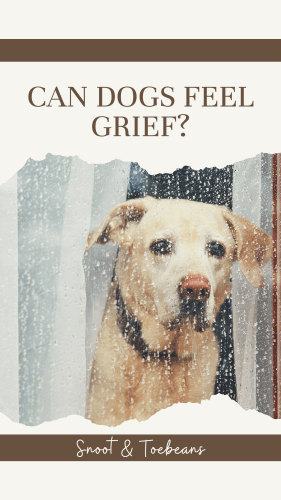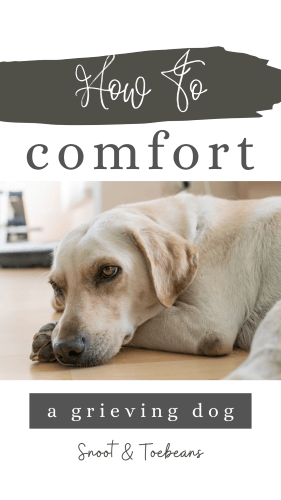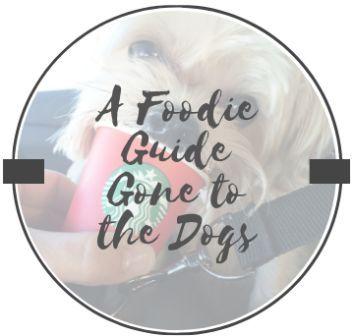Disclosure: My dog blog is supported by dog parents just like you. I only recommend products that I would use on my dogs. All opinions expressed here are my own. I sometimes earn a small affiliate commission, at no extra cost to you, when you click through the affiliate link and purchase something. You can read more about my affiliate policy here.
(Article #2, helping a grieving dog in a 3-part series on coping with the loss of a dog.)
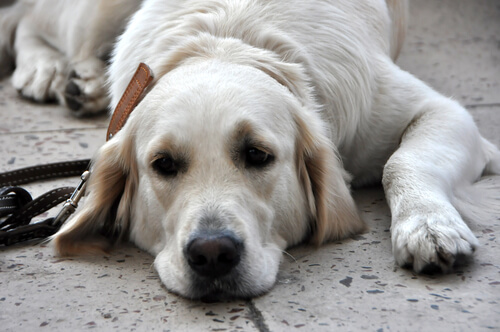
The first series article justifies grief as real for humans when coping with the loss of a dog. However, grief is also real for our other dog/dogs in the household. Therefore, this article will explore helping a grieving dog deal with the loss of a companion.
While our dog/dogs may not fully grasp the significance of death, it’s clear that they grieve. So, helping a grieving dog makes it especially hard on us. For instance, while grieving over one dog, we must understand how the loss affects our other dog/dogs.
Therefore, keep in mind that the loss can be overwhelming for them. In addition, our other dog/dogs may experience distress due to our sorrow. So, helping a grieving dog can be difficult. According to Lynn Buzhardt, DVM, pets, especially dogs, respond to loss much like human toddlers.
“They may not totally understand the concept of death as an everlasting separation. But, they do recognize and feel a current sense of loss.”
~ Lynn Buzhardt, DVM

After Bella’s passing last May, I was very much aware of how lost Edward was. Honestly, I was lost at the thought of helping a grieving dog, while my heart was so broken.
Furthermore, I had no idea how long he might grieve. Bella was 12 when she passed, and Edward was 10. I really wouldn’t say they were a bonded pair. But, her presence sure made him calmer.
So, I did notice some changes in his behavior. However, before helping a grieving dog, it’s important to know the signs that indicate grieving.
Helping a Grieving Dog – Know the Behavioral Changes
Just like humans, each dog will process a sense of loss differently. So, when helping a grieving dog, you may not see all of these changes. In fact, you may see the opposite of what I list here:
- Appetite Change (more, less, and speed of eating)
- Lethargy and depression
- Separation anxiety
- Vocalization (frequency and volume)
- Accidents in the house
- Sleeping (increased, decreased, or different locations)
- Behavior issues – acting out
- Personality changes
- Aggression
- Territoriality
- Affection (increased, decreased, clingy/needy, or withdrawn)
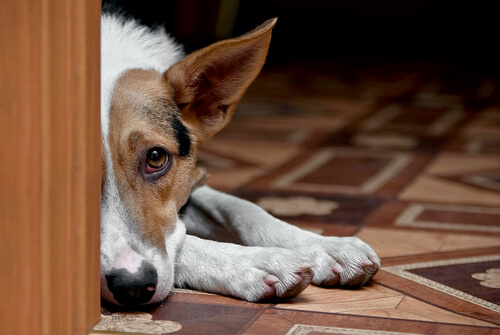
According to a 2016 New Zealand study, dogs experience behavior changes when a companion animal dies. Plus, depending on the behavior, it can last between two and six months.
Affectionate behavior is one of the most common behaviors to see a change in. Furthermore, the study shows that 74% of dogs show this behavior change. Of those, 61% are more demanding of attention, or more clingy, or needy.
Let’s take a closer look at a few of these other possible behavioral changes.
Appetite Changes
Many dogs lose their appetite, either not eating or eating less following the loss of a furry friend. This is especially true if the deceased dog was the dominant one. So, without the alpha dog to initiate mealtime, there is an interruption to the routine. Furthermore, 30% of dogs experience appetite loss after losing a companion, according to the New Zealand (NZ) study.
Vocalization Changes
There can be a variation in vocal changes. For instance, a dog may begin barking more than normal. However, there can also be a decrease in barking. For example, a dog may usually bark at the postman, then it suddenly comes to a stop.
Or, a dog may begin barking more for no apparent reason. However, vocalization changes will be more like howling, whimpering, and whining.
Sleeping Changes
Some dogs begin sleeping more than usual. While other dogs will be restless and awake more. Furthermore, the NZ study shows that 30% of grieving dogs nap more.
In addition, a dog may change the location of where they habitually sleep. For instance, they may relocate to where their companion once slept, or an unusual place altogether.
Personality Changes
Being more clingy with parents is very common for dogs after losing a furry friend. In fact, the NZ study shows about 60% of dogs cling more to their humans. They become unsure of their role in the household.
Opposite of clinginess is becoming withdrawn. For example a dog may lack interest in play time, or they may hide away from everyone.
A few other personality changes to take note of:
- Pacing constantly
- Sulking
- Separation anxiety
- Destructiveness
- Potty accidents

Helping a Grieving Dog – How to
When helping a grieving dog, it’s very important to respect the fact that dogs do indeed grieve. Plus, it’s important to understand that they process everything emotionally and intuitively. Therefore, their grieving process is often very difficult for them. For instance, their sense of loss is so profoundly emotional.
I do have some suggestions for helping a grieving dog but first, consider a vet visit. For instance, ensure there is no relation between a grief symptom and a physical problem.
If there are no physical problems, here are a few tips you can try for comforting your dog. And, y’all, I know some of these are hard, because you are dealing with your own grief. I’ve been there, and still there some days. But, hear me when I say, when you are helping a grieving dog, you are healing, too!
10 Tips to Help Your Dog Deal With Grief
1 – Consider allowing your dog to see and smell their companion’s body after death.
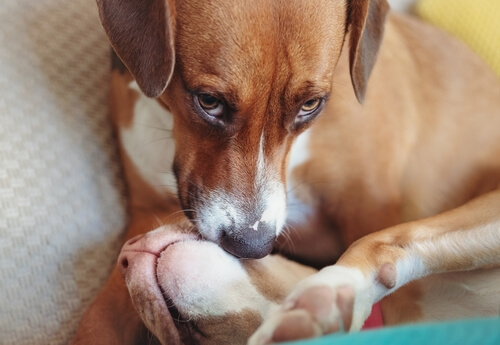
For instance, this would be in the event of a natural death or having to put a dog down. Your dog may have no obvious reaction. In fact, most dogs sniff and walk away. However, it may help with comprehension that there is no need to search for their companion.
My Bella died suddenly from either a stroke or a heart attack in front of us. Edward was there, too. It was obvious he was aware something had happened to her. So, we wrapped her in a blanket, leaving her head exposed, and placed her in her bed. We did this so Edward could go to her on his own and sniff. He did, but it was unclear if he realized she was gone.
After an hour, we moved her with her bed to the garage, and Edward saw this. Then, the next day, I left her at my veterinarian office for cremation services. Later, Edward became anxious, whining, and scratching at the garage door. It was obvious that he thought Bella was out there in the garage.
So, I took him into the garage, and he spent about 15 minutes searching and sniffing. When he scratched on the car door, I let him in it, so he could be assured she wasn’t there. Once he was content that she was not in the garage, we went back inside. He never searched for her inside the house.
2 – Closely monitor and recognize the grief.
The process of grieving in humans isn’t well understood, let alone in dogs. So, it’s important to monitor your dog for signs of a distress reaction.
Furthermore, when respecting your dog’s grief, you’re honoring that what they are going through is real. In other words, you are letting them know you understand and are there for them.

Now This Is Something To Bark About!!
3 – Maintain consistency, routines, and bonding.
Sticking to your dog’s normal routine will help with feeling secure. For instance, you are reassuring your dog that all is well by being consistent. Furthermore, dogs in general will do better when they know the expectation from one day to the next.
Therefore, keep mealtimes, exercise, walks, playtime, grooming, bedtime, and other daily activities on a consistent schedule. In consistency with mealtimes, be sure to keep your dog’s diet the same. Your dog may not have much of an appetite in the beginning. But, continue to offer the same food at the same time each day.
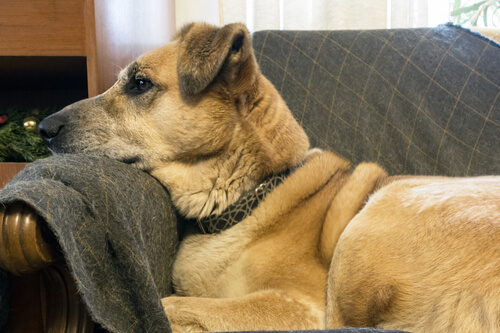
In addition, be sure to use your dog’s hunger to help him get his appetite back. It’s tempting to want to use treats to entice your dog to eat, but try to refrain. Furthermore, if your dog doesn’t regain an appetite after several days, make an appointment with the vet. This will rule out a stress-induced health problem.
Most importantly, continue bonding with your dog. For example, go on special outings, or snuggle often on the couch. Plus, add more exercise and stimulation to your dog’s life. In fact, getting outside is going to be good for both of you during this time of loss.
4 – Be sympathetic without intensifying your dog’s grief.
For instance, hovering and playing the “you poor baby” game isn’t helpful. It will just intensify the grief. So, be sympathetic with words such as, “You’re okay, or I’m here for you.” But, don’t feel sorry for your dog in any kind of dramatic way.
5 – Think twice before introducing a new dog into the family right away.
There really is no way to know how long to wait before adding a new furry member. For instance, each situation will be different. However, don’t expect miracles to happen immediately if you get a new dog too soon. It may not be the answer to help with your dog’s grief, yet.
Try looking at how we as humans react to other humans passing away. In other words, we don’t rush out to find another person to replace the one who just died. Furthermore, you and your dog need time to process your grief over losing a furry family member.
One last thought to consider here…
There will come a right time to welcome a new dog into your home and heart. So, when this happens, consider letting your dog help you choose the new family member.
6 – Help your dog make new memories.
Dogs live in the moment and are very capable and willing to be fully present for us. On the other hand, time is a relative concept in the life of a dog. So, sometimes the moments aren’t right now but yesterday, or last week, or last month. Furthermore, the imprints of the past often stay with them.
So, it is our job to help them erase any sadness and replace it with happy memories. I mentioned above to continue bonding with your dog. When doing this, maybe add in some brand new activities to help create some new memories.
7 – Try not to inadvertently reward your dog’s depression.
This is tricky, because it comes naturally to comfort a grieving dog with rewards. However, giving attention to unwanted behavior can reinforce it. Not that depression itself is the unwanted behavior, but the distress reaction to depression might be. For instance, you don’t want to reward a lack of appetite, anxiety, inactivity, or other types of distress reaction.
Therefore, try distracting your dog with healthy activities that provide opportunities for positive behavior reinforcement. For example, go for a walk, give a gentle massage, play a game of fetch, or exercise together.
Furthermore, a brain game, or a mind-challenging play session around the house could be a good distraction. Plus, this is a good time to introduce new, healthy snacks such as freeze dried meat treats.
8 – Allow furry family members to establish their own revised social structure.
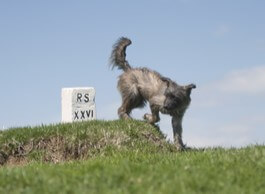
If you happen to have a multi-pet household, then you know how they relate to each other. So, when one of the furry family members dies, it creates temporary instability within the group. Furthermore, this can result in conflicts with a lot of growling, barking, hissing, or attacking.
Therefore, it is natural for this to be disturbing for the human family members. However, unless your pets become a danger to each other, let them reestablish group dynamics on their own.
If the group conflict behavior doesn’t subside as they settle into their new normal, then consult your veterinarian. In addition, you can consult a veterinary behaviorist for guidance on how to resolve the conflict issue.
9. Watch how you outwardly display your grief.
Your dog can become very anxious and upset with human dramatic, emotional displays of grief. Therefore, encourage family members to be sensitive to your dog’s state of mind. Plus, take care that you personally do not grieve dramatically in front of your dog. However, you can seek comfort from your dog, but try not to cause additional stress.
10. Patience is key.
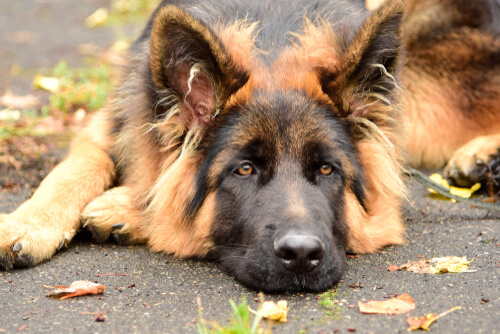
Lastly, your dog desperately needs your patience during this grieving season. Just like with humans, there is no time frame. In other words, it may take weeks, or even months for your dog to emerge from grief. So, the best thing you can do is honor your dog’s grief process. For instance, allow your dog the time it takes to make sense of it all with your help.
In Conclusion

So, helping a grieving dog deal with their loss of a companion takes you being observant. As noted above, dogs demonstrate their grief in different ways. However, I only listed a few ways. Therefore, it’s important to note any change in your surviving dog’s behavior.
In addition, the most important way in helping a grieving dog is to give lots of love and attention. Plus, try new activities to do together. The goal is to find things to share with your dog while you both mourn.
Remember it’s normal for you and your surviving pets to mourn the loss of a furry family member.
What suggestions do you have for helping a grieving dog? We would love to read your suggestions in the comments.
You might want to read the following information from our site.
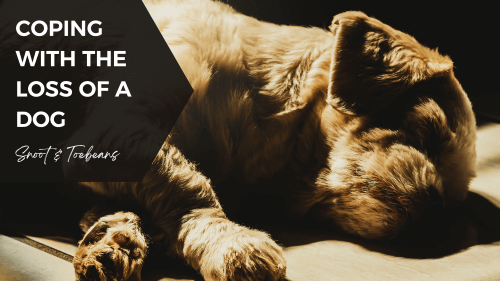
You can save the information in this post to your Pinterest account by using one of the images below to pin.
